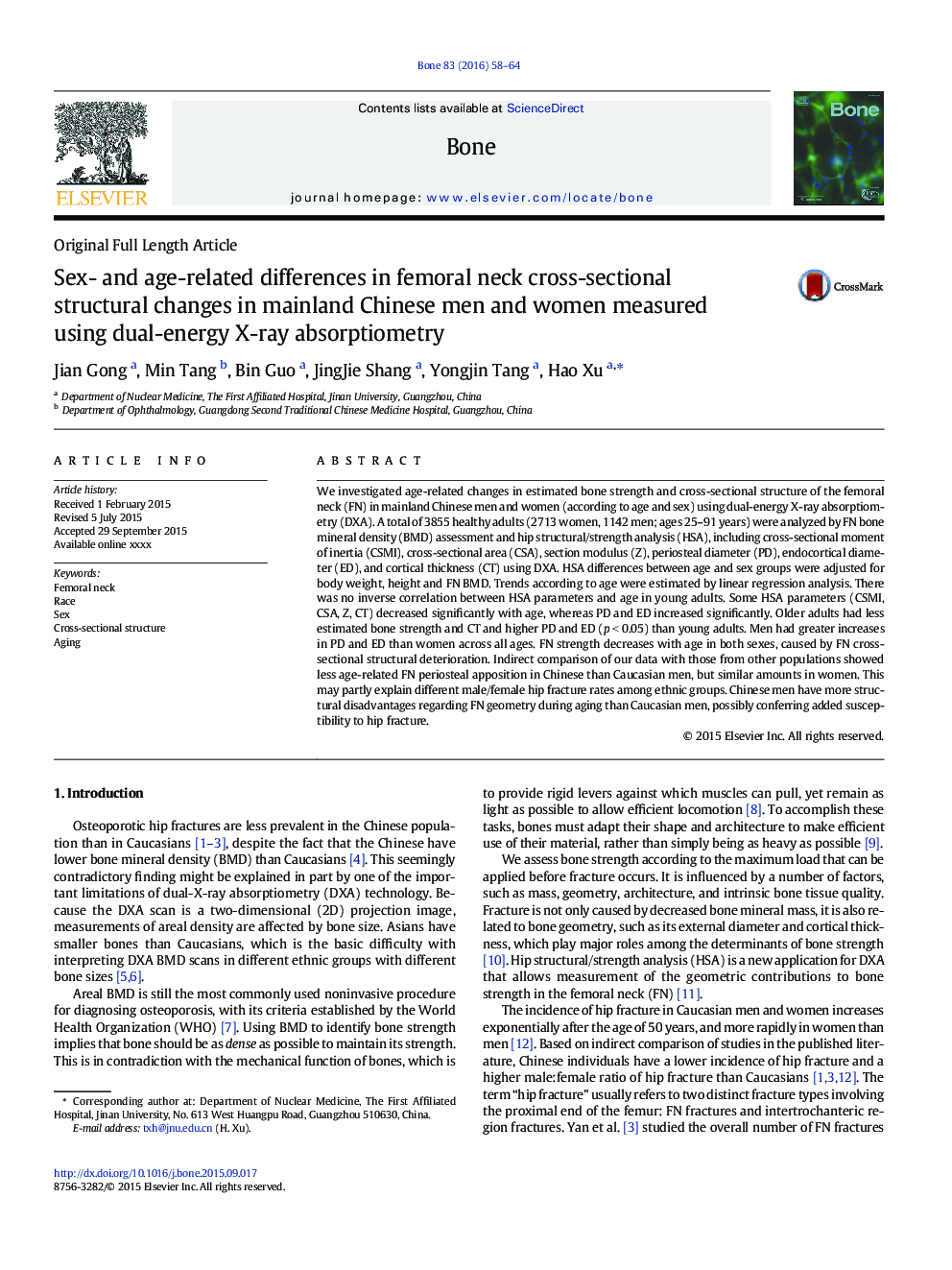| Article ID | Journal | Published Year | Pages | File Type |
|---|---|---|---|---|
| 5889116 | Bone | 2016 | 7 Pages |
Abstract
We investigated age-related changes in estimated bone strength and cross-sectional structure of the femoral neck (FN) in mainland Chinese men and women (according to age and sex) using dual-energy X-ray absorptiometry (DXA). A total of 3855 healthy adults (2713 women, 1142 men; ages 25-91 years) were analyzed by FN bone mineral density (BMD) assessment and hip structural/strength analysis (HSA), including cross-sectional moment of inertia (CSMI), cross-sectional area (CSA), section modulus (Z), periosteal diameter (PD), endocortical diameter (ED), and cortical thickness (CT) using DXA. HSA differences between age and sex groups were adjusted for body weight, height and FN BMD. Trends according to age were estimated by linear regression analysis. There was no inverse correlation between HSA parameters and age in young adults. Some HSA parameters (CSMI, CSA, Z, CT) decreased significantly with age, whereas PD and ED increased significantly. Older adults had less estimated bone strength and CT and higher PD and ED (p < 0.05) than young adults. Men had greater increases in PD and ED than women across all ages. FN strength decreases with age in both sexes, caused by FN cross-sectional structural deterioration. Indirect comparison of our data with those from other populations showed less age-related FN periosteal apposition in Chinese than Caucasian men, but similar amounts in women. This may partly explain different male/female hip fracture rates among ethnic groups. Chinese men have more structural disadvantages regarding FN geometry during aging than Caucasian men, possibly conferring added susceptibility to hip fracture.
Keywords
Related Topics
Life Sciences
Biochemistry, Genetics and Molecular Biology
Developmental Biology
Authors
Jian Gong, Min Tang, Bin Guo, JingJie Shang, Yongjin Tang, Hao Xu,
